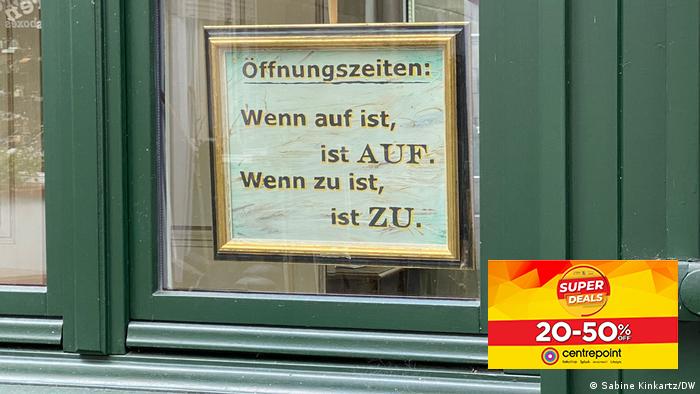
The food has been ordered, the menu is set. It includes asparagus, saddle of lamb in filo pastry. And, to top it all off, ice cream flavored with sweet woodruff harvested by the maestro himself: restauranteur Vincenzo Berenyi.
"I'm delighted that we're getting back to business," says the beaming Berenyi. "I feel like a kid at Christmas."
Restaurants across Germany were told to close down back at the beginning of November 2020.The COVID-19 lockdown was initially slated to last just four weeks. But since then, more than six months have passed.
Interior dining remains closed
Berlin is among Germany's federal states that have given the go-ahead for restaurants to reopen over the Whitsun or Pentecost holiday. However, the new regulations in Berlin only apply for "open-air gastronomy." Half of the capital's restaurants will have to stay shut because they simply are not able to comply with the requirements. Although many of them do have the capability to set up tables and chairs outdoors, this would not, however, be enough to cover their costs.
Berenyi's "Kurpfalz Weinstuben" is a Berlin institution. Normally, around 50 people would be served on the busy terrace outside the restaurant. But social distancing means that there are fewer tables, with a maximum of 36 guests permitted. Vincenzo Berenyi says he would need each table to be occupied for two sittings in order to make reopening worthwhile.
€30 reservation fee.
The restaurant opens at 5:00 p.m. "Guests from the first sitting need to depart by 7:45 to make way for a second round at around 8:00," says Berenyi. What's more, guests have to prove that they are either fully vaccinated, have fully recovered from infection, or prove a recent negative COVID-19 test.
Binding reservations can then be made via the restaurant's website. Booking a table requires such details as name, address and telephone number. And there's an advance reservation charge of €30 ($40) per person, which is deducted from the bill at the end of the meal. "We have to be sure that guests who have booked do actually turn up. Otherwise, the whole system simply won't work," Berenyi explains.
Rugs, umbrellas, and heaters provided
The restaurateur insists he's not concerned that all the fuss will deter potential guests from coming: "They want to be here. They're really looking forward to things finally getting back to normal." But there's another headache: the weather. Spring has so far been a huge disappointment, distinctly cool with plenty of rain.
This is why one corner of the restaurant is piled high with 30 new grey fleece blankets. Berenyi has also invested in some large umbrellas for the terrace, and four patio heaters are ready to go. So the effect of cool temperatures or a few raindrops can be minimized.
Meanwhile, nobody can say how long the indoor areas of the restaurant are likely to remain closed to customers. "I hope that'll change by the end of June at the latest," Berenyi says with a distinct note of irritation. "I don't really want to give much thought to the reasoning behind this division between indoor and outdoor areas in the catering and welcoming business. I mean, I'm seeing people crowding into buses, trains, supermarkets."
Berenyi and his business partner Sebastian Schmidt, the man in charge of the kitchen, have designed the menu to make it possible to sell some off some of the food as takeout if the weather doesn't play along. They've also set up a large grill so that guests can stand and keep warm while enjoying barbeque lamb or ox cheeks served in crusty rolls with potato or tomato salad.
"'Grill and chill' is our motto, and we want it to have a real party flavor. We've been in touch with a brewery to deliver extra supplies of beer if required."